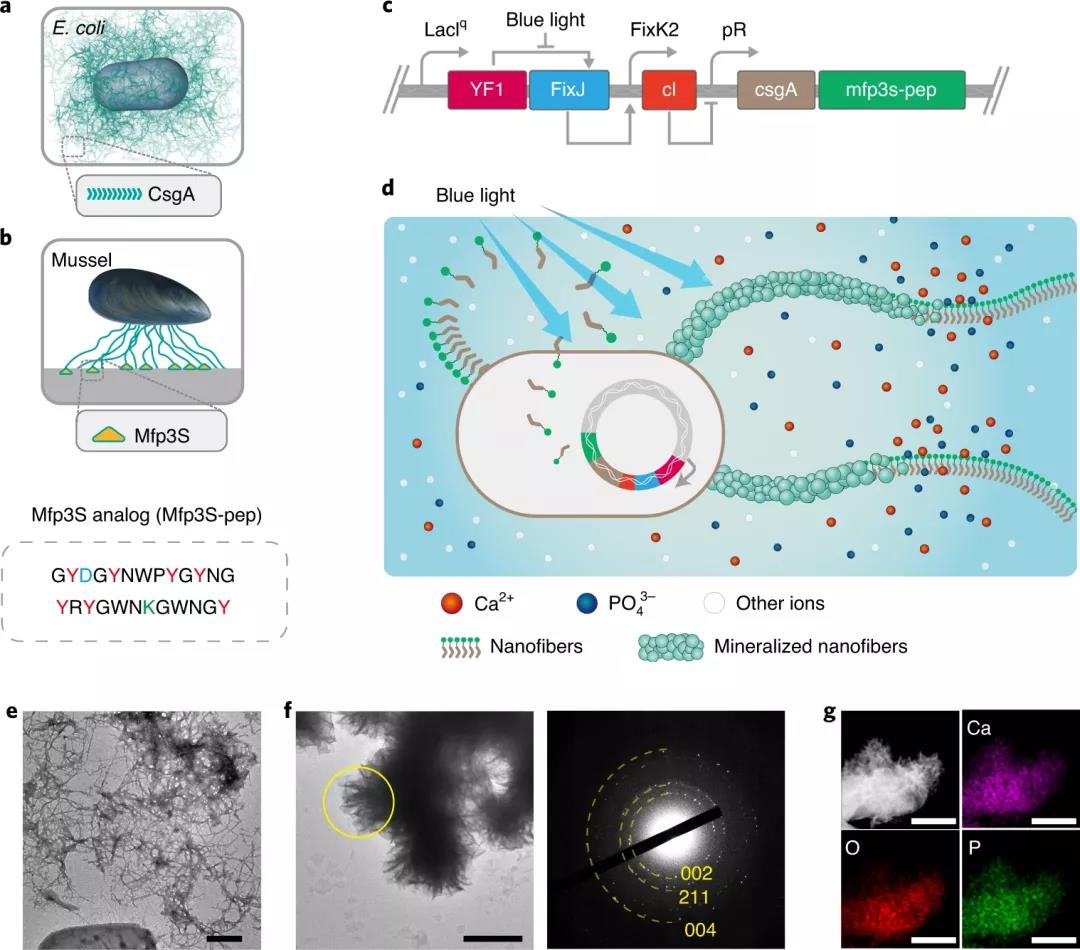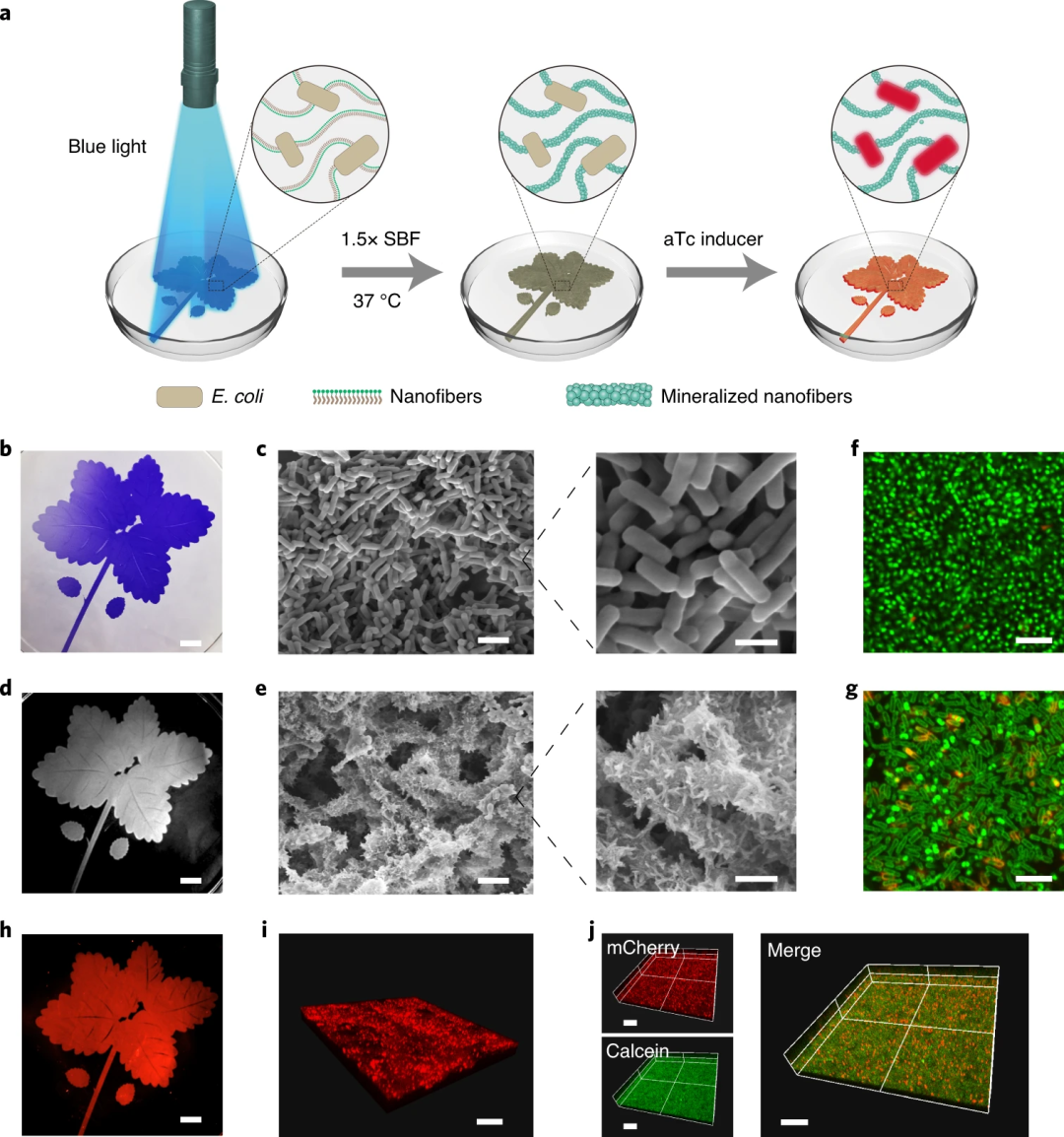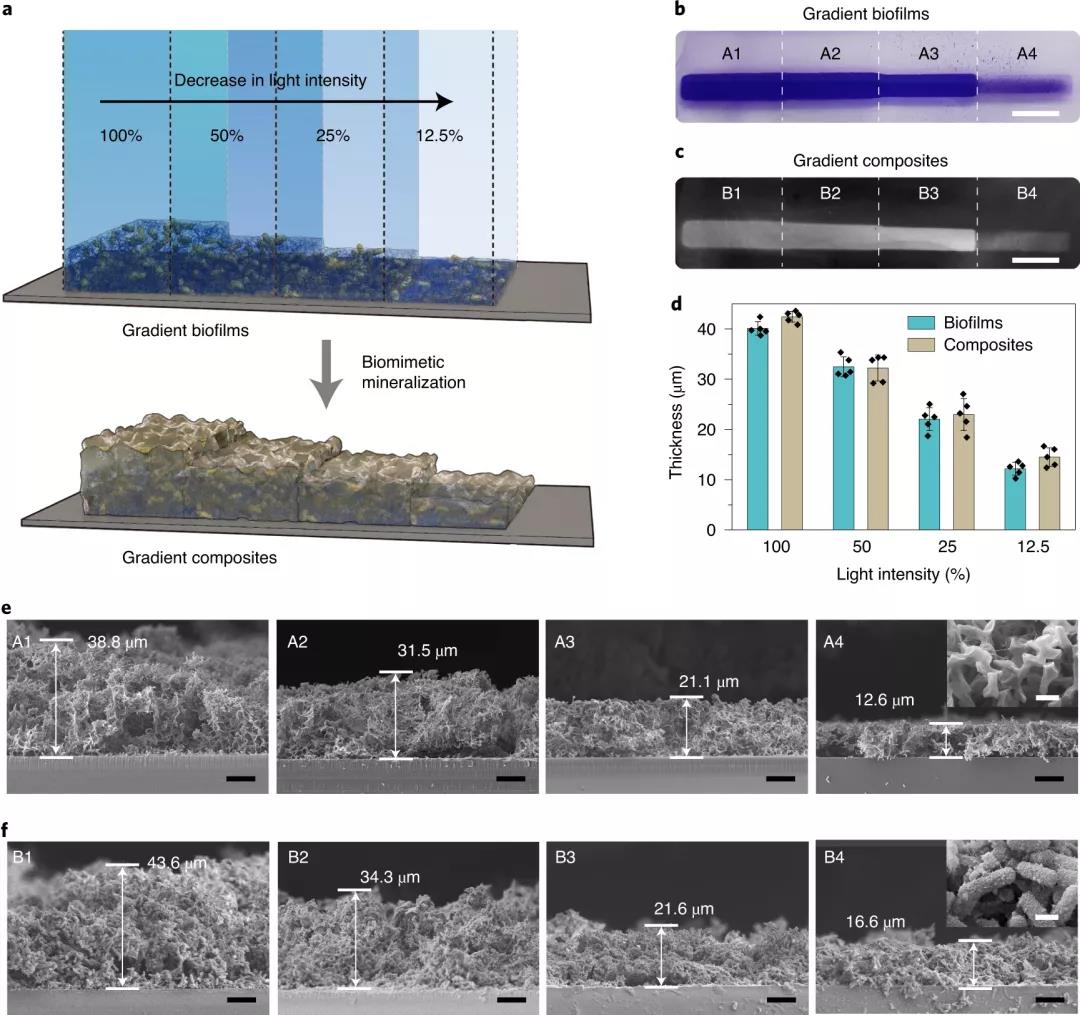Biomimetic materials, another Nature publication!
QQ Academic Group: 1092348845
Detailed
Creatures in nature are brilliant engineers. In nature, living organisms are good at producing organic-inorganic composite materials with various hierarchical structures through the process of biomineralization. A particularly attractive category of natural composite materials is functionally graded composite materials, which are characterized by specific location characteristics distributed in mineralized materials, which are derived from changes in composition, microstructure and geometrical shape (such as crayfish mandibles) .
The strictly controlled deposition of inorganic minerals in these natural composite materials usually relies on the controlled spatio-temporal order of organic components. These components contain both insoluble scaffolds and soluble molecules, which together determine the location and crystals where mineralization begins The final size. In addition, the time and degree of biomineralization must be precisely controlled by cells to ensure the structure and function of biomineralization materials in the organism.
The latest advances in the study of biomimetic mineralization have led to the development of orderly structures at various levels, which are similar to or even better than natural structures. Current research is mainly focused on inactive polymer-based scaffolds (such as synthetic polymers, polysaccharides, peptides, and proteins) as templates for mineralization of inorganic materials. Another method of biomimetic mineralization is to directly use the structure and function of special cells to produce composite materials.
However, when only inactive bacterial superstructures or user-defined static scaffolds are used, the prepared composite material lacks the unique "active" properties of natural composite materials, including self-repair ability, remodeling ability in response to environmental cues, and evolution ability. Therefore, reviewing how organisms use active scaffolds to coordinate biomineralization in space and time, it is obvious that the use of cell-controlled methods to produce active patterned and even functionally graded composites is a promising but largely unexplored field .
Introduction
In view of this, inspired by functionally graded composite materials in nature, Professor Zhong Chao of Shanghai University of Science and Technology and others used light-induced E. coli biofilm and biomimetic mineralization technology to develop precise spatial patterns and gradual gradient control of mineral density Active composite material. The results were published in the journal Nature Chemical Biology.
Light-induced mineralization of biofilms
Researchers designed E. coli biofilms that promote mineralization by rationally selecting fusion protein modules that can meet the three requirements:
First, the fusion protein can be tolerated by the secretion mechanism of the curli system;
Second, it has little effect on the growth of biofilms and will not damage the inherent self-assembly of adherent fibers;
Thirdly, it will induce HA mineralization and at the same time exhibit strong interfacial adhesion to the mineralized HA layer.
After analysis, the researchers chose the CsgA-Mfp3S-pep fusion protein as the representative of the HA mineralization functional module. Experiments also show that the role of Mfp3S-pep fusion protein in promoting the formation and crystallization of HA minerals and its ability to bind HA are highlighted. And the constructed bacteria can produce functional biofilm materials under blue light, and promote the mineralization of HA.

Figure | Engineering light-responsive E. coli functional biofilm as a scaffold for HA mineralization
Active and high modulus
Given that the extracellular matrix secretion and assembly functions of the engineered biofilm can be controlled by light, it should be possible to control the spatiotemporal biofilm formation in a way that can subsequently control the formation of the complex. Research has found that the projected light pattern is faithfully summarized as a patterned bacterial biofilm, and after 7 days of mineralization, the resulting composite material retains the original pattern, and the surface of the patterned biofilm is covered with slab mineralization HA structure.
In addition, even after 7 days of mineralization,74%±9% of bacteria still exist in the composite material.Therefore, this biofilm-HA material can be considered as an active composite material. Moreover, mineralization can enhance the mechanical properties of E. coli biofilms, and its Youngs modulus is 15 times higher. Therefore, the technology may be extended to produce configurable self-supporting mineralized structures, which can generalize very complex three-dimensional porous structures, such as diatom frustules.
Figure | Spatially controlled mineralization of light-induced biofilms in biopatterned composites
Light intensity indirectly regulates mechanical strength
Many biological tissues exhibit gradient mineralization, which is essential for the mechanical properties of such materials. In addition, a large amount of work in tissue engineering emphasizes that the interface between hard and soft tissue must be accurately graded to obtain successful physiological performance. Can the mechanical properties be adjusted by adjusting the light intensity? Experiments have proved that the density of biomass in the biofilm can be adjusted based on the light intensity, thereby controlling its mechanical properties.
Micro X-ray computed tomography data analysis confirmed the gradient mineral density of composite materials formed under different light intensities. This successful demonstration of active composites with adjustable mineral gradients and mechanical properties suggests that they may have applications in the regeneration of tissue-bone interfaces with gradient mineral content in tissue engineering.

Figure | Density controllable mineralization in light intensity-regulated gradient biofilms is used to make active gradient composite materials
Used for damage repair in specific locations
Based on the adhesion properties of Mfp3S-pep and the application of PS microspheres in damage repair applications, the researchers continued to explore the ability of engineered biofilms to aggregate and adhere to PS microspheres, and subsequent HA mineralization in damage repair applications.
Studies have shown that all samples have successfully captured a series of dense microspheres, which adhere to the glass surface and each other through adhered nanofibers. In addition, for light-induced bone cement formation, under blue light irradiation, minerals are preferentially deposited in the light-induced area where the biofilm initially grows. In addition, the hydroxyapatite mineralized composite material appears as a dense concrete-like layer that fills the damage trenches, thus highlighting how the mineralization function of the active composite material can improve the durability of repair applications.

Figure | Application of controllable life mineralization in damage repair at specific locations
summary:
The research group drew inspiration from the natural world and produced patterned composite materials and gradient composite materials using a light-regulated biofilm platform. Compared with conventional non-biological composite materials, the resulting composite materials substantially utilize the responsiveness of biological materials to the environment. The cells inside the composite material remain viable and can respond to environmental stimuli even after mineralization. In addition, it is found that the biomass density of the biofilm determines the mineral density, which determines the final mechanical properties of the composite material.
Therefore, this research reveals the possible mechanism of the formation of functionally graded composite materials in nature, and opens the door to the creation of functional organic-inorganic composite materials with adaptability, self-healing and other previously unachievable material properties.
Finally, once again remind people that active composite materials are still feasible. They can be further used as protected, encapsulated active factories in less environmentally tolerated environments for biomedicine (for example, production therapy) and biological applications. Repair applications (for example, production of toxin-degrading enzymes).
It is worth noting that on December 23, Zhong Chao and others also published an important review on Nature Reviews Materials, the topic is: Material design through synthetic biology.
Introduction to the research group
Dr. Chao Zhong, graduated from Tianjin University with a bachelors degree in materials science, and received a Ph.D. from Cornell University in 2009. He has worked as a postdoctoral fellow in the Department of Materials of the University of Washington (Seattle) and the Center for Synthetic Biology at MIT. After returning to China, he served as research team leader and researcher at ShanghaiTech University from July 2014 to March 2020, and was promoted to Tenured Professor in December 2019. Since March 2019, he has served as the director and researcher of the Materials Synthetic Biology Center of the Institute of Synthesis of the Advanced Institute.
Dr. Zhong research field is the internationally emerging frontier field of material synthetic biology. The main research direction of the research group is to use synthetic biology technology to develop new materials, including living body functional materials and protein underwater bonding materials. Currently, Dr. Zhong has published more than 30 academic papers, including one or communication papers published in Nature Nanotechnology, Nature Chemical Biology, Science Advances, Nature Communications, National Science Review, Materials Today, Advanced Materials and other journals. The related achievements have been awarded 3 world or US patents, and 4 world patents and 4 domestic patents are being applied for. Received honors such as Shanghai Shuguang Scholar, Shanghai Pujiang Talent and Person of the Year of the Chinese Journal of Scientists in 2019, presided over the key projects and general projects of the National Natural Science Foundation of China, the National Ocean Science Key Laboratory Open Fund, the Shanghai Basic Special Key Project Fund and etc. project.
references:
Wang, Y., et al. Living materials fabricated via gradient mineralization of light-inducible biofilms. Nat Chem Biol (2020).
https://doi.org/10.1038/s41589-020-00697-z
Source of information: Fantastic Object Theory
This information is from the Internet for academic exchanges. If there is any infringement, please contact us and delete it immediately
- Previous: Jun Lin Am: In situ ca
- Next: A Rising 2D Star: Nove


 Academic Frontier
Academic Frontier
